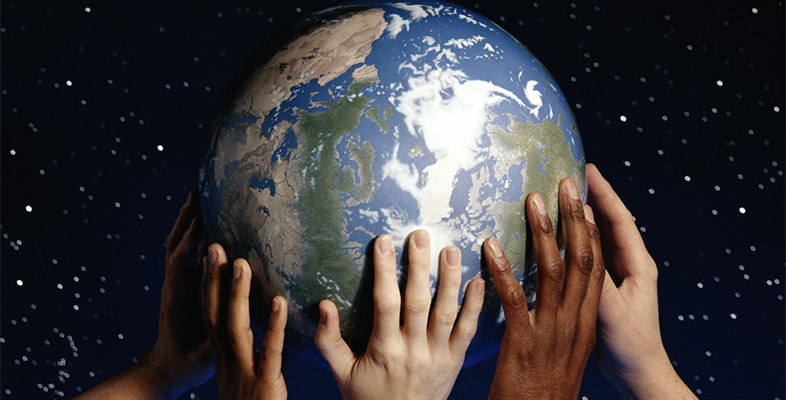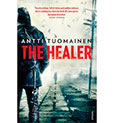3 Issues facing education
In this section, you are going to read and watch a range of stimuli to help you think about issues facing education in the future.
Activity 4 A dystopian (but possible) future?
Can you imagine what the world might look like if society fails to meet some of the global challenges we have been considering? Read the following extract from a novel entitled The Healer which is set in Finland in the near future in which a narrator reports his journey into the City of Helsinki:
The metro tunnel was closed from Sörnäinen to Keilaniemi because of flooding. … I went back to watching the news on the screen attached to the back of the driver’s bulletproof glass compartment. The southern regions of Spain and Italy had been officially left to their own devices. Bangladesh, sinking into the sea, had erupted in a plague that threatened to spread to the rest of Asia. The dispute between India and China over Himalayan water supplies was driving the two countries to war. … The forest fires in the Amazon had not been extinguished even by blasting new river channels to surround the blaze.
…
Estimated number of climate refugees planet-wide: 650–800 million people.
Pandemic warnings: H3N3, malaria, tuberculosis, ebola, plague.
…
I turned my gaze back to the rain which had been falling for months, a continuous flow of water that had started in September and paused only momentarily since. At least five waterfront neighbourhoods [named] had been continuously flooded, and many residents had finally given up and abandoned their homes.
Their apartments didn’t stay empty for long. Even damp, mouldy and partially underwater, they were good enough for the hundreds of thousands of refugees arriving in the country. In the evenings, cooking fires and campfires shone from flooded neighbourhoods where the power was out.
Think about:
- Do you feel we are on an inexorable journey towards this situation, or do you think such outcomes will be averted?
- What would education need to be like to prepare the next generation for this, or to prevent such environmental, and associated social, change?
Now you will imagine what it means to migrate as a child to a new country. How do you get to understand what is important in this new environment?
Activity 5 Experiences of an exiled child
Look at some photographs from the Exile Voices [Tip: hold Ctrl and click a link to open it in a new tab. (Hide tip)] project. You can find a slideshow on this National Geographic article. The pictures were taken by refugee children.
Think about:
- What do these pictures tell you about the experiences of refugee children?
- The pictures are likely to show experiences that the children value within the camp – can you articulate those experiences?
- What would education be like if it was designed for these children?
And what will the world be like a decade from now? Here you will look at how some of the trends in today's world might be used to predict what lies ahead.
Activity 6 How the world will change
Watch this video from the Centre for Research Innovation and Future Development, Did you know, in 2028… (2014)
Transcript
Did you know... that in 2028, when these children are preparing to leave school, global population will be pushing 8.3 billion.
Islam will be the world’s largest religion, with 2.2 billion followers.
The ‘average’ person will be a 34 year-old Indian man.
Wearable technology will be controlled by thought.
50% of today’s jobs will be replaced by artificial intelligence.
3D printing will mean that many products are produced on location, reducing the need for transportation.
Car insurance will be a thing of the past, as most cars will be driverless.
The entire contents of the Internet will be able to be stored on DNA.
The most valuable and fought-over resource will be water.
62% of the global population will live in cities.
1 in 3 people will live beyond 100 years of age.
Depression will be the second highest cause of disease burden in middle income countries after obesity.
Chinese will be the most widely spoken language, closely followed by Spanish.
The Chinese economy will have been the largest for 14 years, closely followed by India.
There will be 2 billion middle class [people] with an insatiable appetite for luxury western goods that are produced in the east.
‘There is no prior period of change that remotely resembles what humanity is about to experience. We have gone through revolutionary periods before, but not as powerful or as pregnant as the fraternal twins – peril and opportunity – as the ones beginning to unfold.’ – Al Gore, The Future (2013).
So what impact will technology have on schooling? Technology has the potential to enrich and empower learning. But there is also the risk that it will overpower life as we know it.
And what impact will the future of employment have on education? The global economy is being transformed with jobs outsourced to developing nations and artificial intelligence.
How will we prepare balanced global citizens with a heart for servant leadership in an increasingly secular, internationalised, technology-driven fast changing world?
[Credits:] Centre for Research, Innovation & Future Development. Produced by Alex Browning. Thanks to Scenario Planning Team.
The changes seem dramatic, but are they more dramatic than the changes we have seen in the previous ten years?
Think about:
- What will be the main opportunities and challenges in the year 2028?
- Do you agree with those identified in the video?
- How will the challenges and opportunities that you identified affect education?

